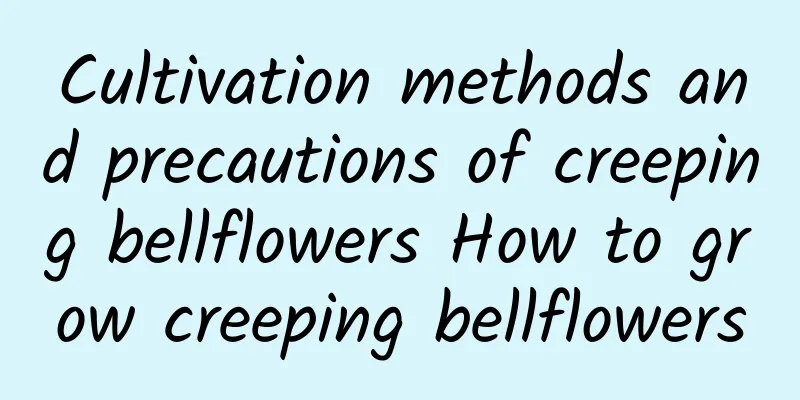Cultivation methods and precautions of creeping bellflowers How to grow creeping bellflowers

|
The lantern-like flowers with red calyx and yellow petals dangle from the green branches of the creeping bellflower, which are very unique and beautiful, especially when used to decorate traditional buildings or furniture, adding to their antique charm. Is the creeping bellflower easy to grow?The creeping bellflower is relatively easy to grow . It is a softwood flower species, and its growth rate is very fast. If the seedlings are planted in spring, they can grow to more than 1 meter in autumn. How to grow creeping bellflower1. Lighting When growing creeping bellflowers, place them in a sunny but not direct sunlight location , and the sunlight needs to be 3-6 hours . For areas without cold winds and frost, you can grow them outdoors on a flower wall or flower rack. 2. Temperature The creeping bellflower is not resistant to cold and heat, so the temperature should be controlled at 20-25℃ during cultivation. Keep it cool in summer, and the temperature should not be lower than 10℃ in winter. It can only grow normally when the temperature is above 15℃, and it can still bloom in winter. 3. Watering The creeping bellflower likes moisture and is not drought-tolerant, but it cannot be waterlogged for a long time . Water it when the soil in the pot is 1 cm dry. In the high temperature of summer, spray water on the plant once in the morning and evening. In winter, water should not be stopped. The water temperature should be suitable, and the frequency and amount of watering can be reduced. 4. Soil The best soil is loose, well-drained, clay-rich, moist, deep sandy acidic soil . The soil can be mixed with peat soil, perlite and vermiculite in a certain proportion to ensure good soil permeability. Precautions for the maintenance of creeping bellflower1. Fertilization requirements The fertilizer requirement is low. Except for the winter dormancy period, no fertilizer is needed . In other seasons, it is the growth period and flowering period, so it is best to give enough fertilizer . You can apply compound fertilizer every 15 days, or use decomposed liquid fertilizer water once a month, and reduce fertilization appropriately in summer. 2. Pests and diseases There are relatively few diseases and insect pests. Diseases such as leaf spot and gray mold can be controlled with mancozeb or carbendazim, and pests such as aphids and red spiders can be controlled with aphidicide emulsifiable concentrate and oxydemeton-methyl emulsifiable concentrate. |
<<: How to grow potted lilies and what to pay attention to How to grow potted lilies
>>: How to grow the king fern and what to pay attention to
Recommend
Calla lily cultivation methods and precautions
Calla lily , also known as water lily, water taro...
Cultivation methods and precautions of peony
1. Breeding methods 1. Soil: If you want to grow ...
How to fertilize the Queen Ruyi
This plant fertilization operation This plant doe...
What to do if the leaves of green radish are rotten
1. Reasonable watering Reason: Although the green...
Geranium Pruning Time
When to prune geraniums When growing geraniums, g...
Can carnations be grown hydroponically?
Can carnations be grown hydroponically? Carnation...
Time and method of transplanting Amaryllis
The transplanting of Amaryllis is usually carried...
Direct sowing method of chives
As a vegetable that can be grown either by direct...
How to plant mountain tortoise
1. Prepare the flower pot Before planting the mou...
How to propagate pine trees and what to pay attention to
How pine trees reproduce There are mainly two way...
How to prune Jasmine
When to prune Jasmine Jasmine can generally be pr...
Vinegar is the favorite of these "3 types" of plants. You can drink tens of kilograms of it at a time, which can strengthen the root system and keep yellow leaves away!
Vinegar is used as a condiment in our daily life....
Method for germination of golden thread lotus seeds
After the golden thread vine is germinated, its g...
Is it profitable to plant bamboo? How much profit can it make?
Is planting bamboo profitable? In the first three...
The difference between long-leaf thorny sunflower and soft-leaf thorny sunflower
1. Tree shape difference The long-leaved thorny p...









